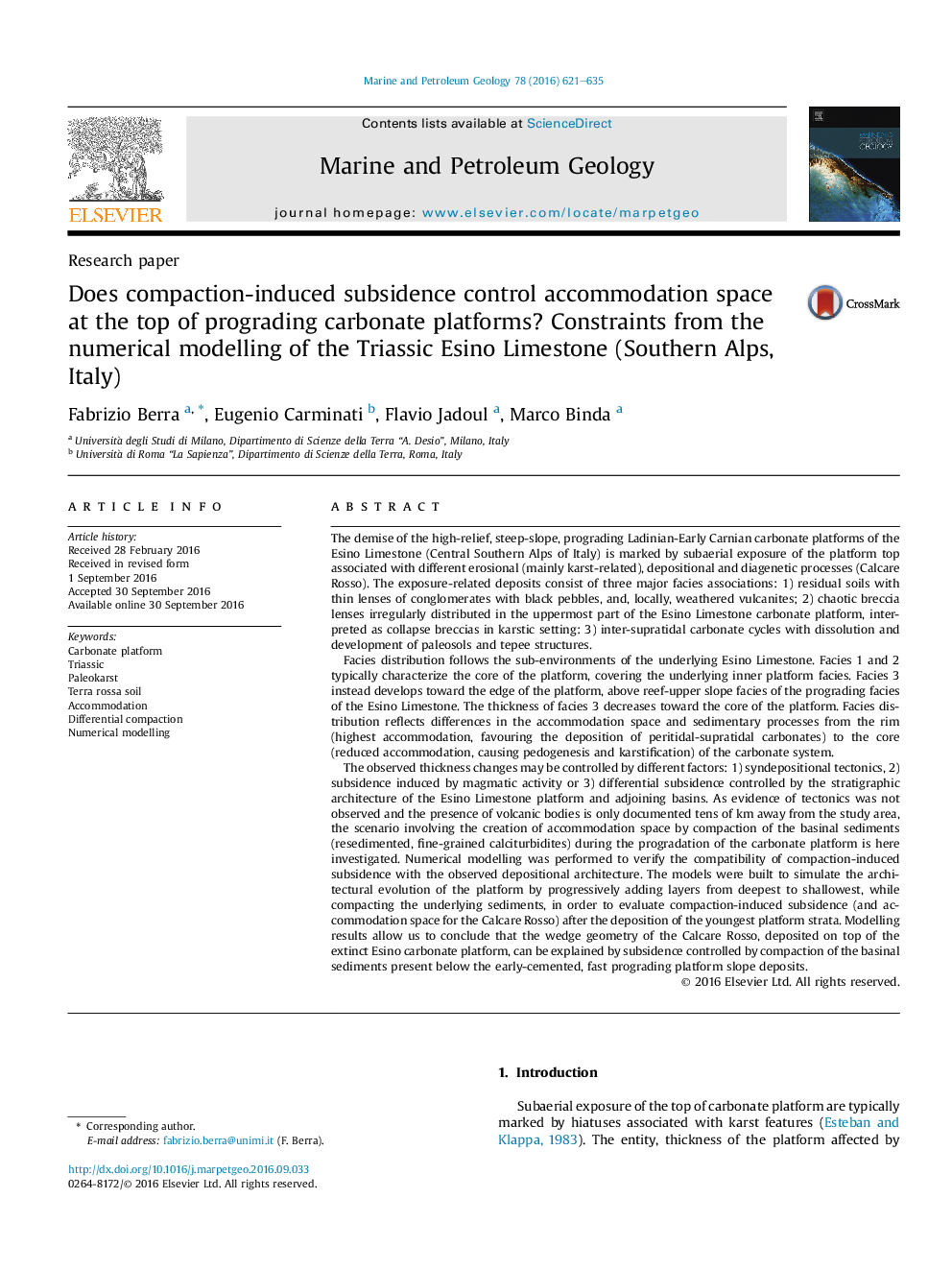| کد مقاله | کد نشریه | سال انتشار | مقاله انگلیسی | نسخه تمام متن |
|---|---|---|---|---|
| 6434420 | 1637149 | 2016 | 15 صفحه PDF | دانلود رایگان |
- Various regressive facies are described on a high-relief carbonate platform.
- Facies distribution of regressive facies documents accommodation changes.
- Accommodation increases toward the prograding edge of the carbonate platform.
- Numerical modelling tests compaction of basinal sediments to create accommodation.
- Compaction of basinal sediments may control accommodation changes on the platform top.
The demise of the high-relief, steep-slope, prograding Ladinian-Early Carnian carbonate platforms of the Esino Limestone (Central Southern Alps of Italy) is marked by subaerial exposure of the platform top associated with different erosional (mainly karst-related), depositional and diagenetic processes (Calcare Rosso). The exposure-related deposits consist of three major facies associations: 1) residual soils with thin lenses of conglomerates with black pebbles, and, locally, weathered vulcanites; 2) chaotic breccia lenses irregularly distributed in the uppermost part of the Esino Limestone carbonate platform, interpreted as collapse breccias in karstic setting: 3) inter-supratidal carbonate cycles with dissolution and development of paleosols and tepee structures.Facies distribution follows the sub-environments of the underlying Esino Limestone. Facies 1 and 2 typically characterize the core of the platform, covering the underlying inner platform facies. Facies 3 instead develops toward the edge of the platform, above reef-upper slope facies of the prograding facies of the Esino Limestone. The thickness of facies 3 decreases toward the core of the platform. Facies distribution reflects differences in the accommodation space and sedimentary processes from the rim (highest accommodation, favouring the deposition of peritidal-supratidal carbonates) to the core (reduced accommodation, causing pedogenesis and karstification) of the carbonate system.The observed thickness changes may be controlled by different factors: 1) syndepositional tectonics, 2) subsidence induced by magmatic activity or 3) differential subsidence controlled by the stratigraphic architecture of the Esino Limestone platform and adjoining basins. As evidence of tectonics was not observed and the presence of volcanic bodies is only documented tens of km away from the study area, the scenario involving the creation of accommodation space by compaction of the basinal sediments (resedimented, fine-grained calciturbidites) during the progradation of the carbonate platform is here investigated. Numerical modelling was performed to verify the compatibility of compaction-induced subsidence with the observed depositional architecture. The models were built to simulate the architectural evolution of the platform by progressively adding layers from deepest to shallowest, while compacting the underlying sediments, in order to evaluate compaction-induced subsidence (and accommodation space for the Calcare Rosso) after the deposition of the youngest platform strata. Modelling results allow us to conclude that the wedge geometry of the Calcare Rosso, deposited on top of the extinct Esino carbonate platform, can be explained by subsidence controlled by compaction of the basinal sediments present below the early-cemented, fast prograding platform slope deposits.
517
Journal: Marine and Petroleum Geology - Volume 78, December 2016, Pages 621-635
